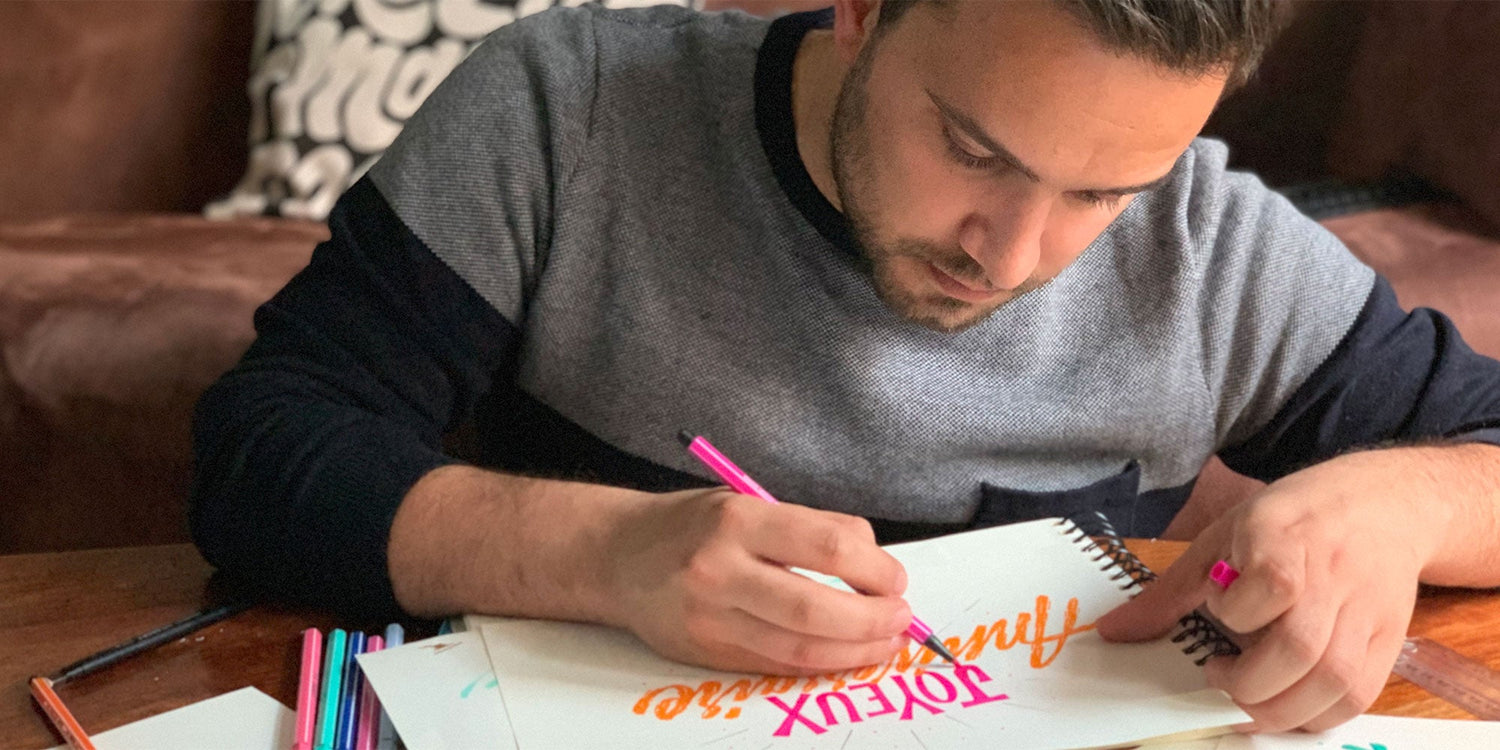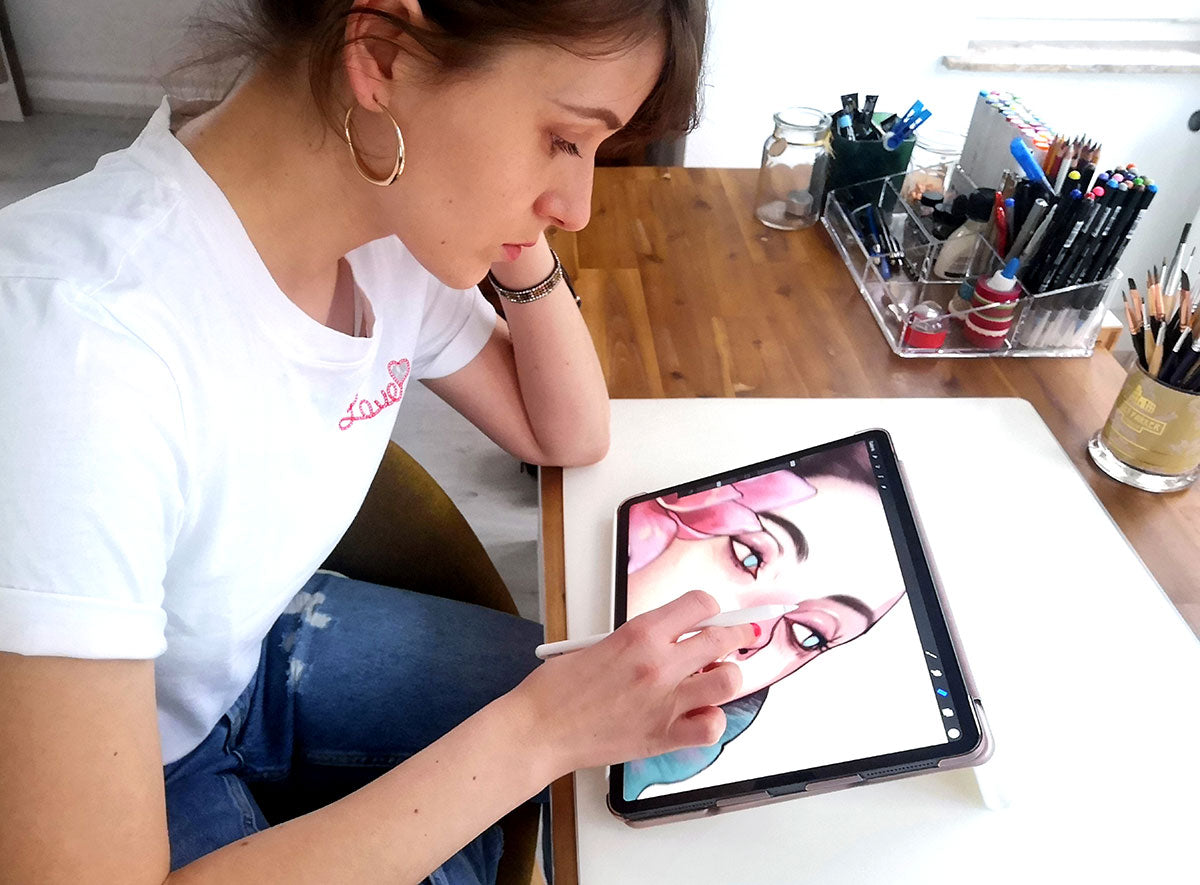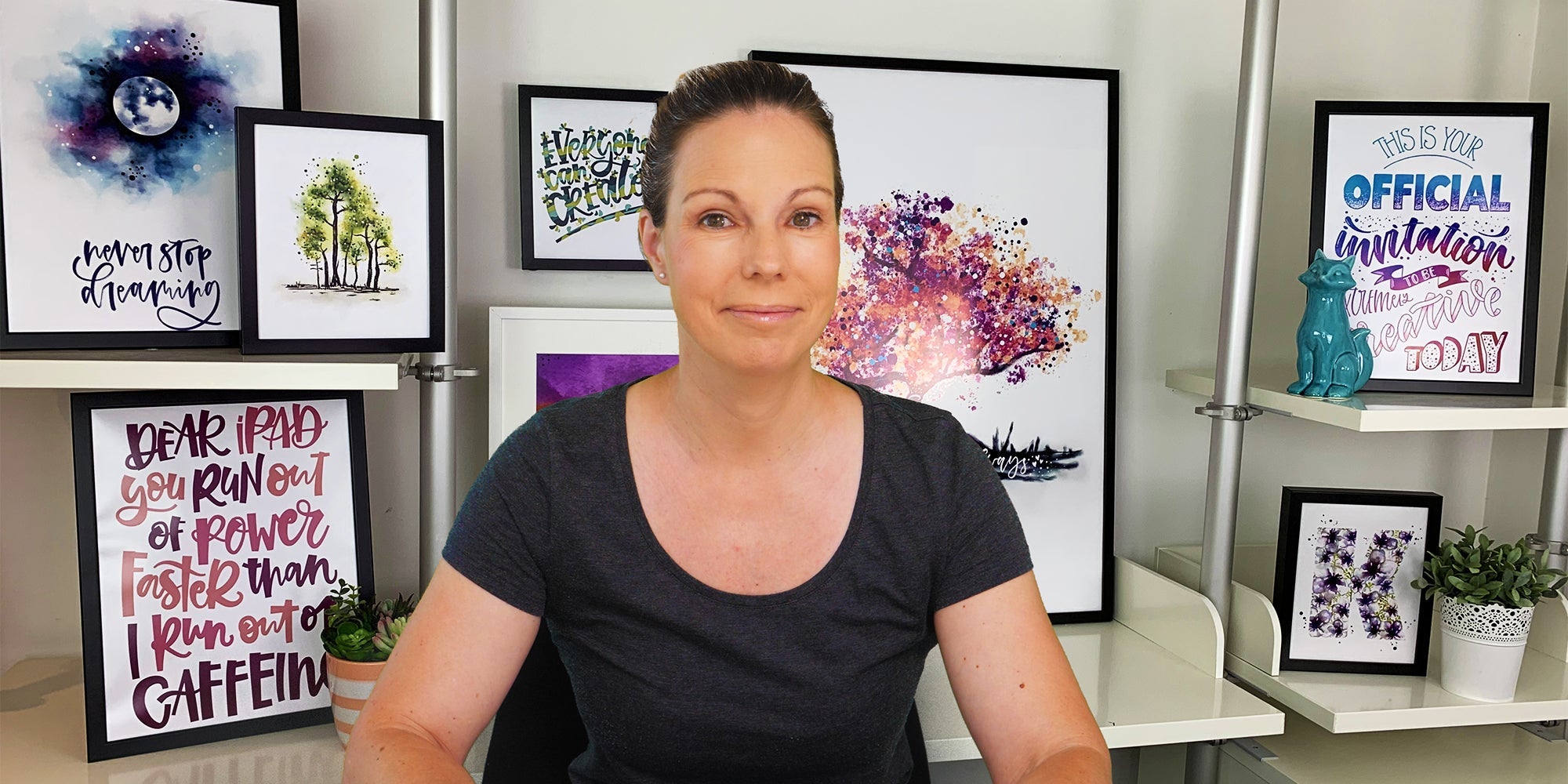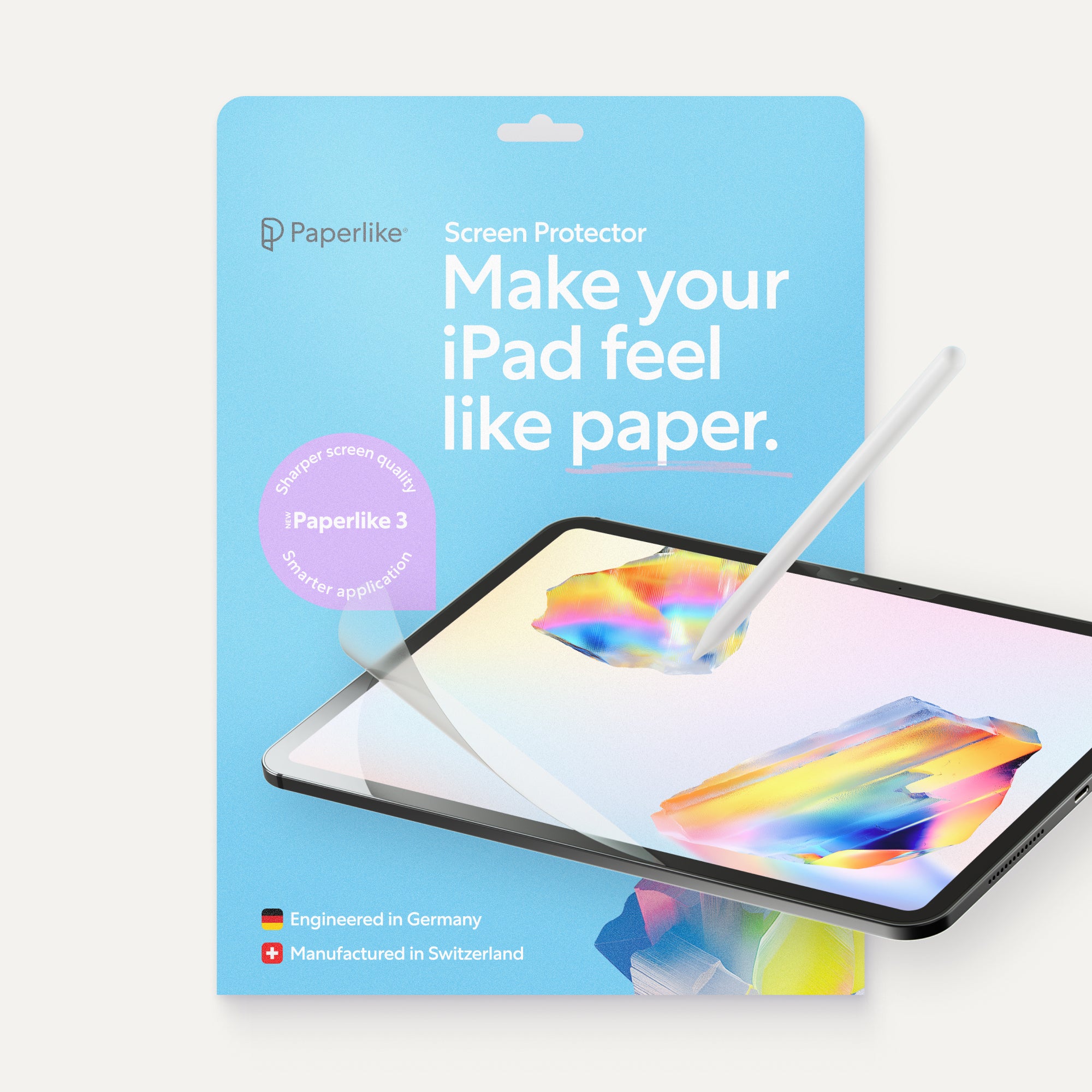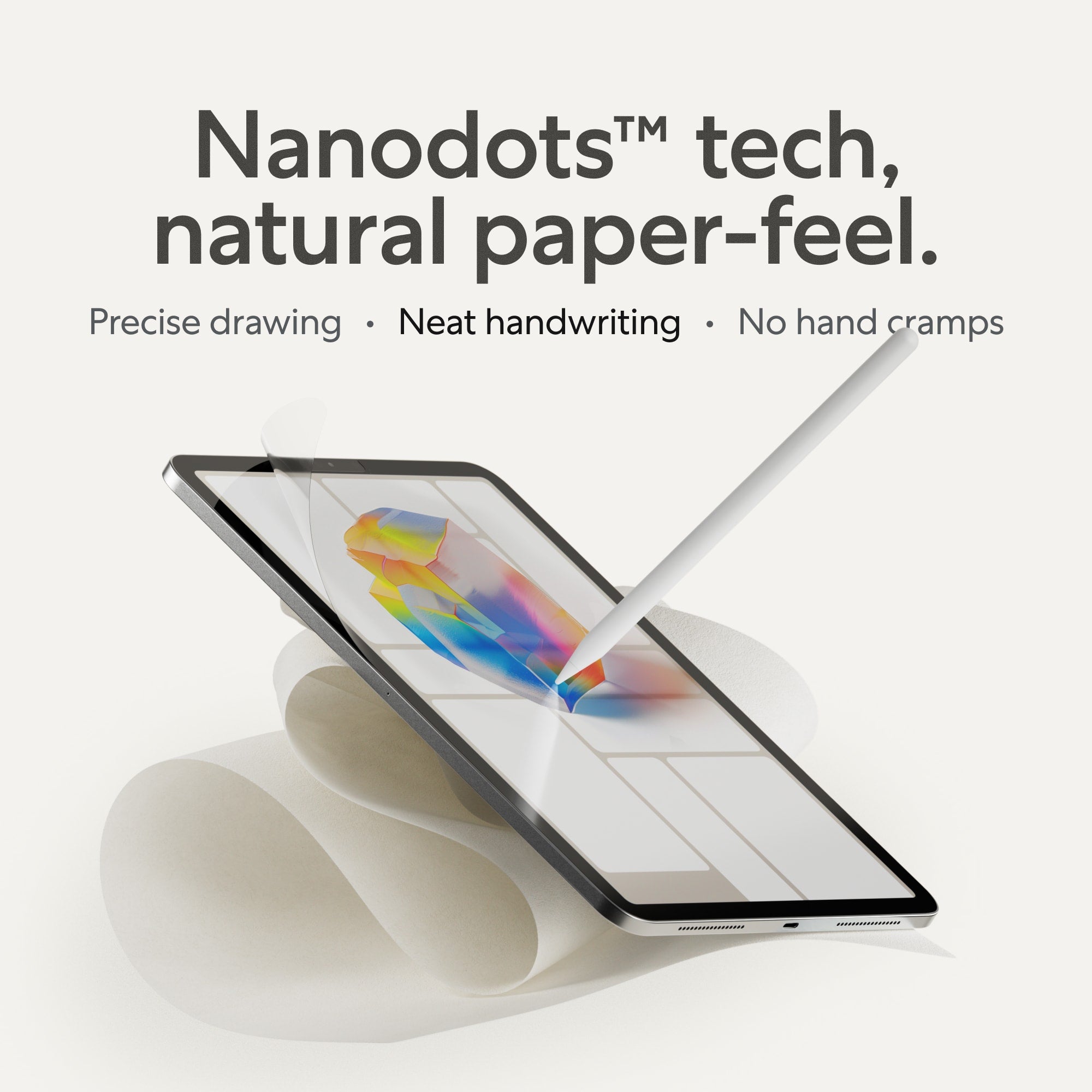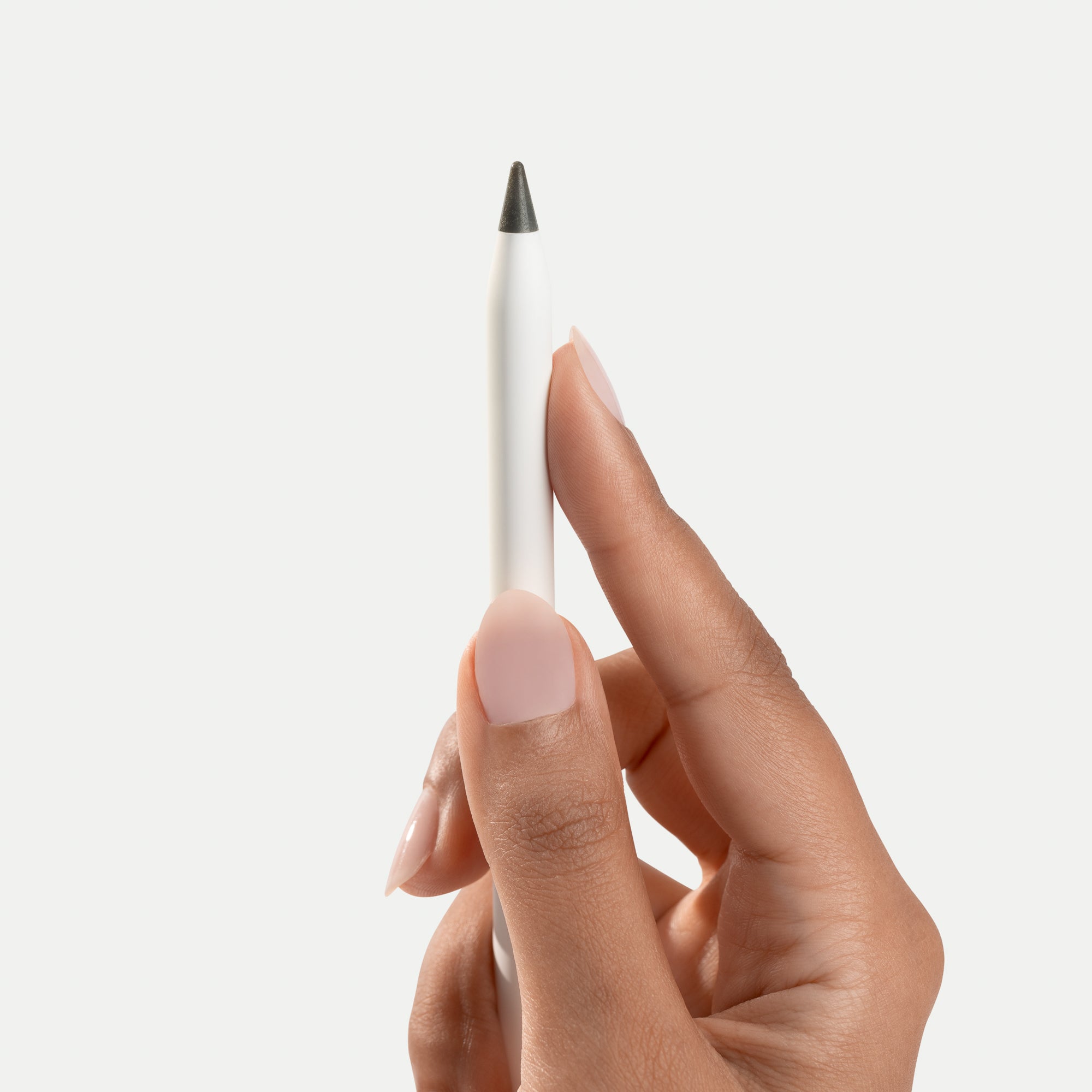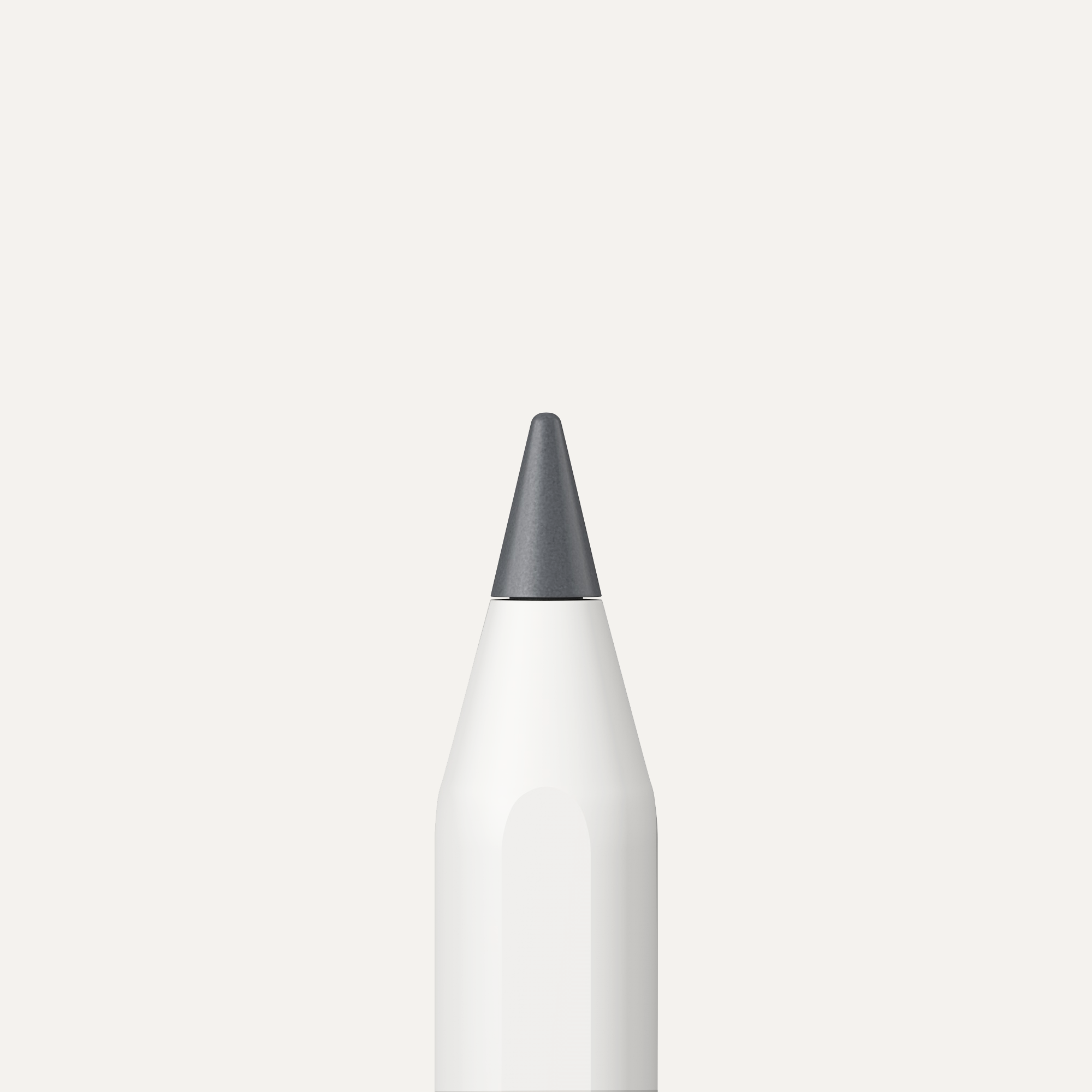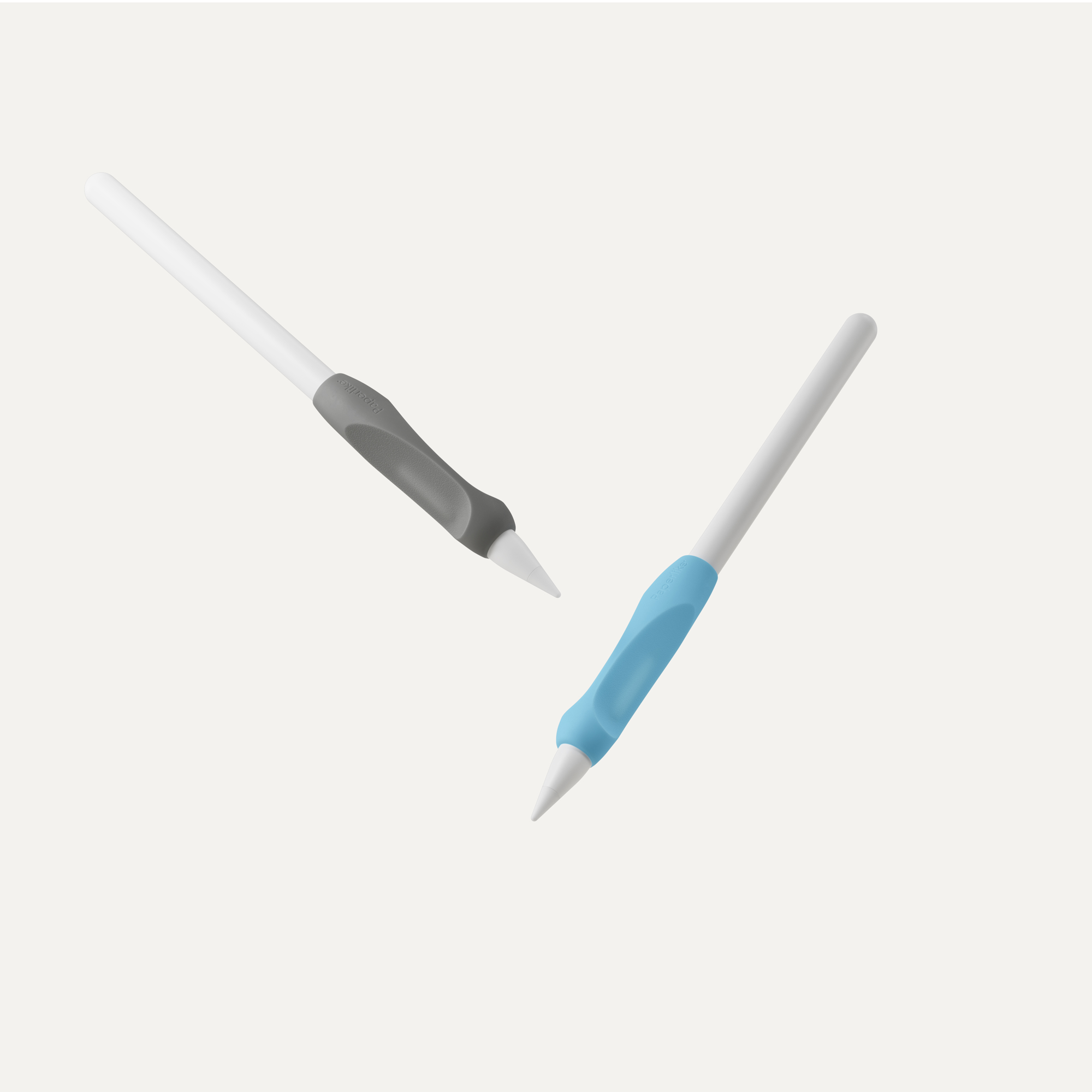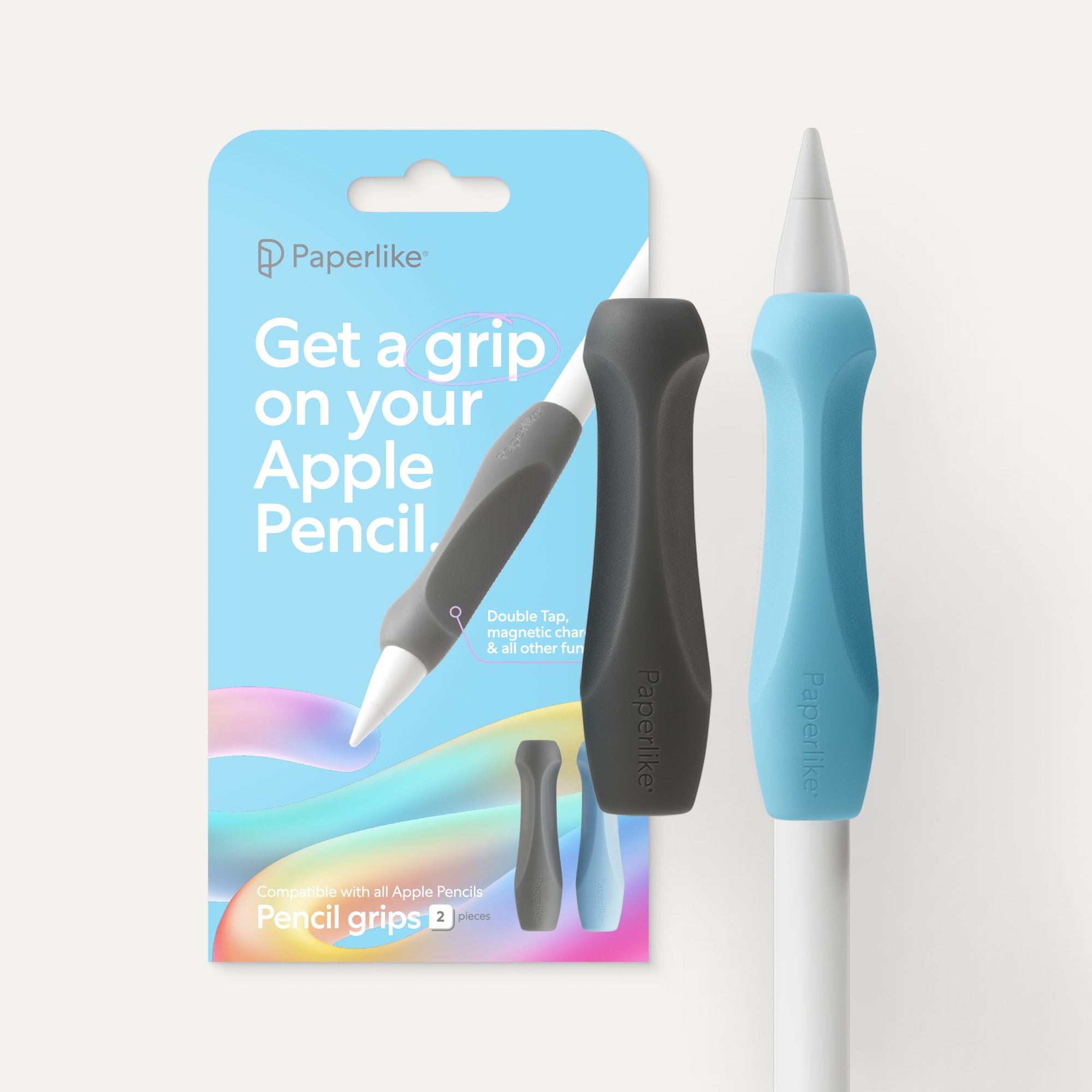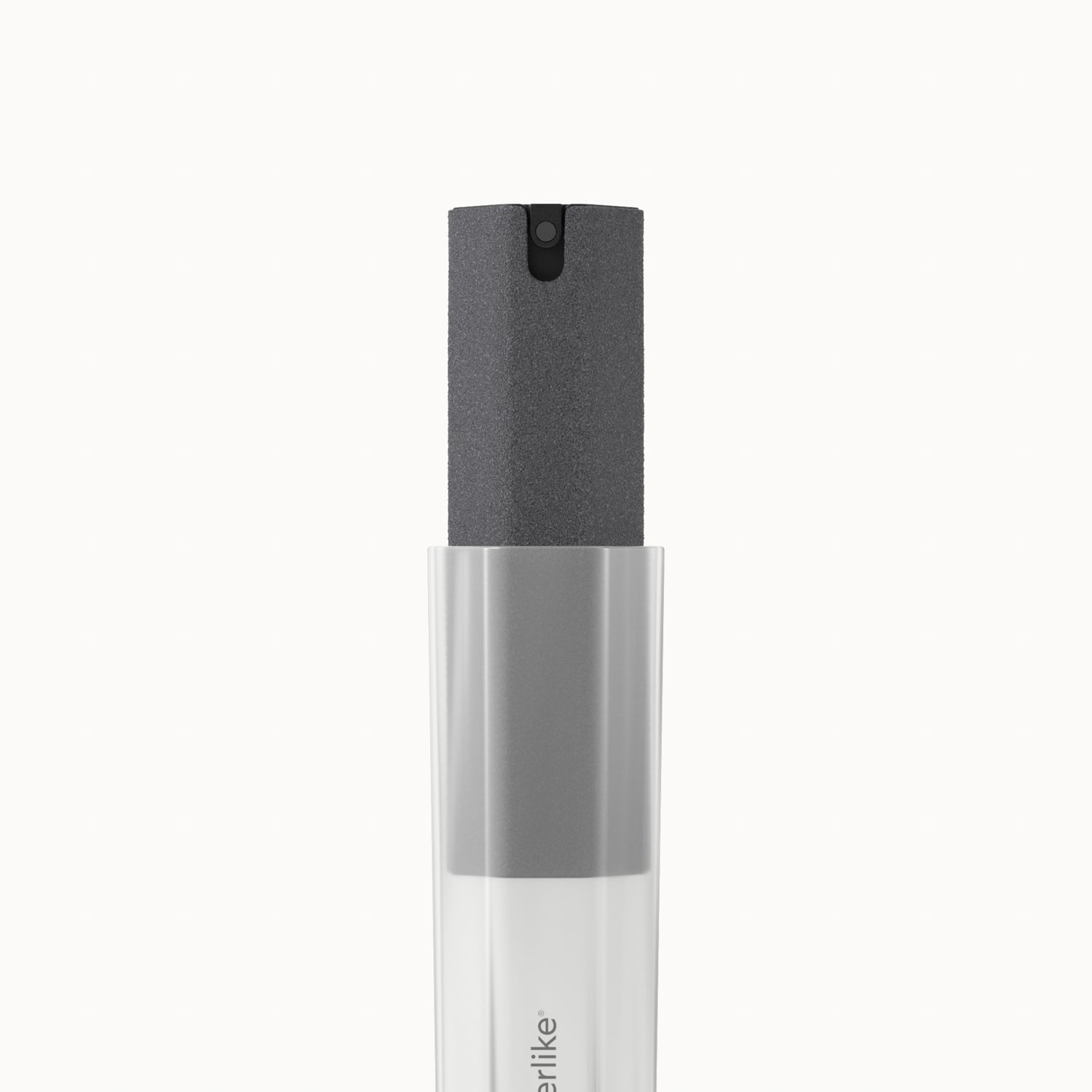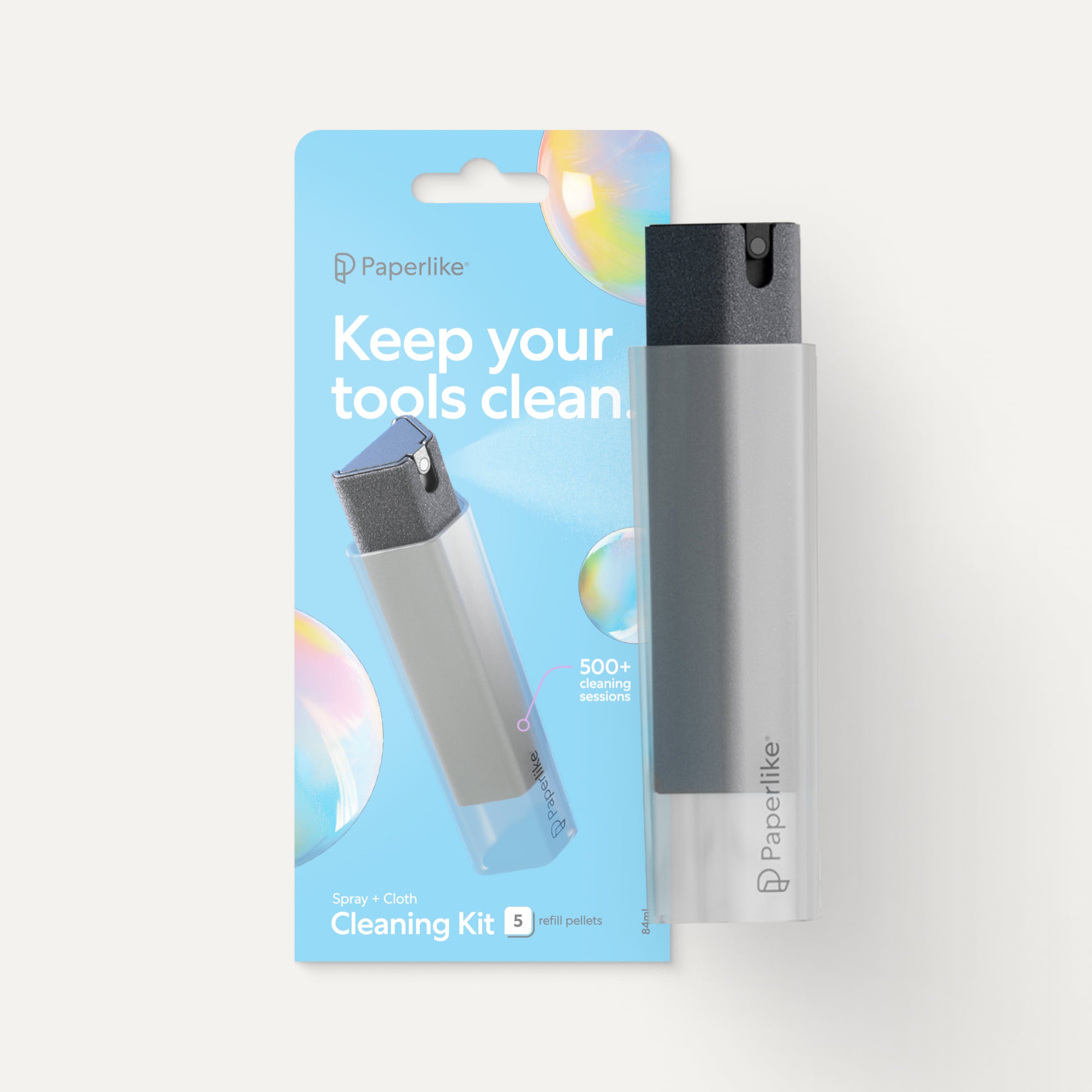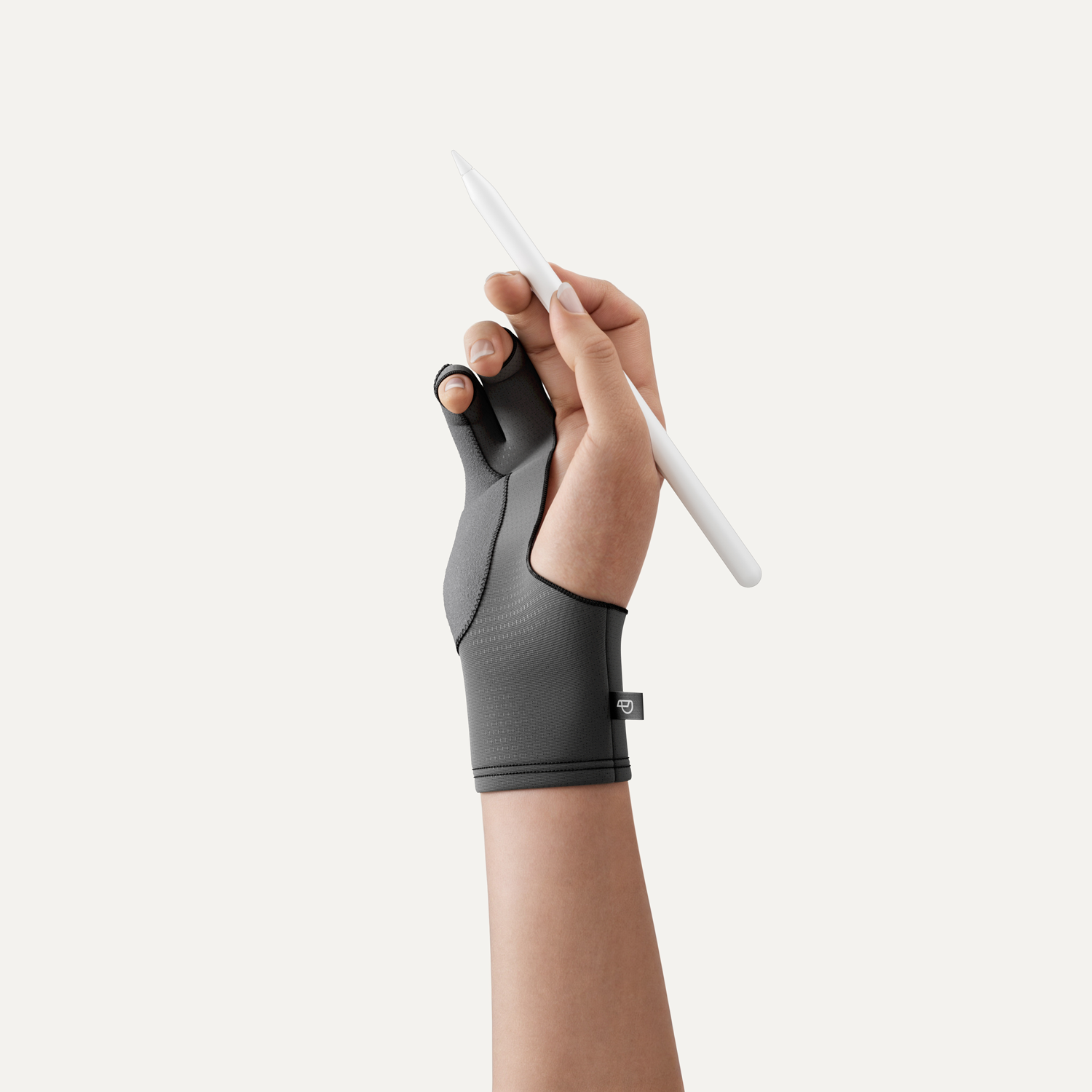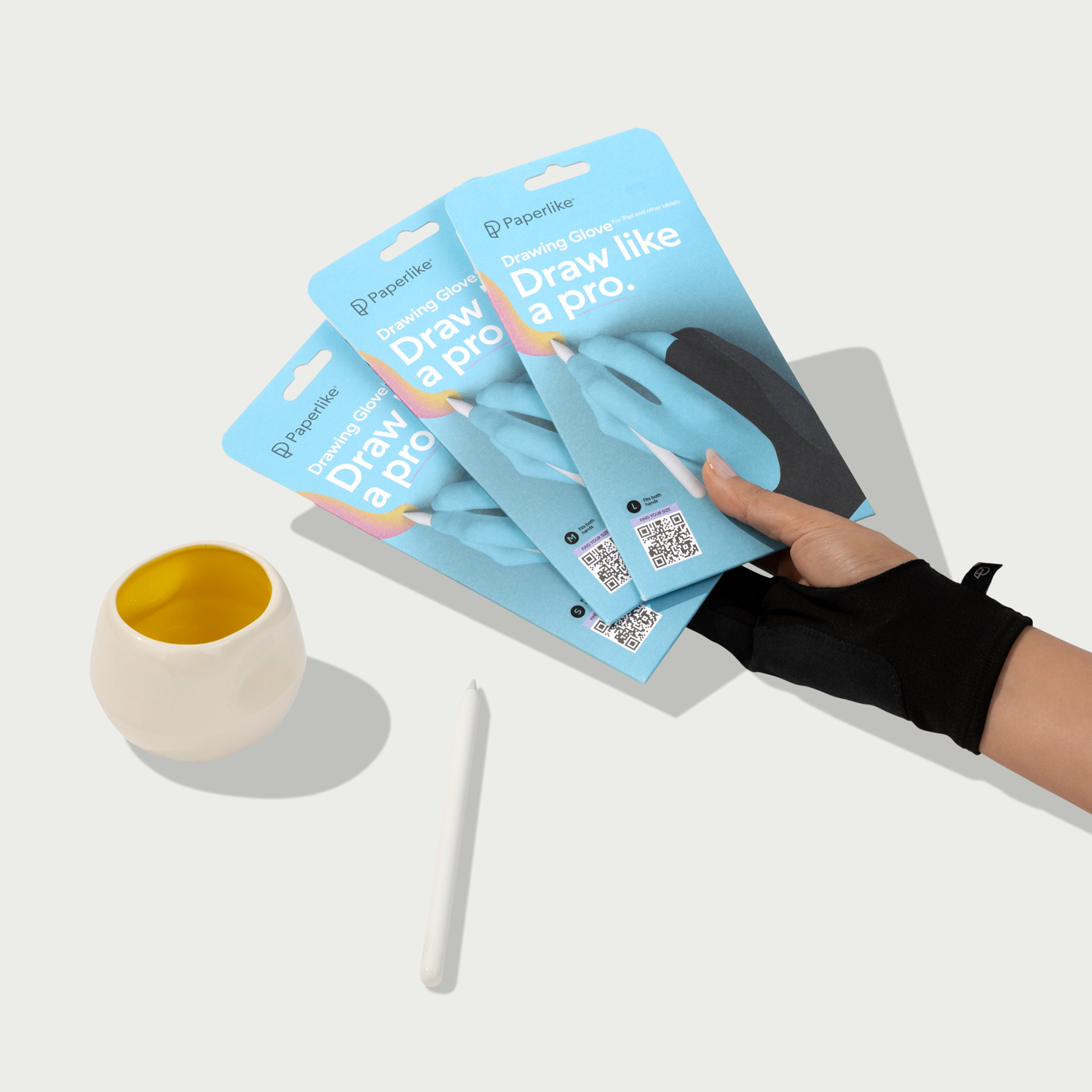Making a career as an artist seems an almost impossible challenge for many creatives, but for Paris-based letterer Stephane Lopes, it seemed an inevitability. I spoke with Stephane a few weeks ago, and his passion for design and lettering really shows. His story is a testament to the dream we all have: to get paid for doing that we love.
I was the man that creates
Stephane grew up in near Paris, France with his parents and one brother. While his mother urged him to take up music in his youth, he was more fascinated with visual arts. He says he’s been drawing and making art since he was about six or seven years old.
"I'd always ask my parents and brothers what to draw," Stephane says. "I mean, I was like, ‘I want to draw, but I don't know what. So tell me an idea, and I'd just draw it.' I was always searching for ideas."
Stephane’s obsession with creation was palpable, and would ultimately shape his career, but not everybody was on board.
"My mom has been really, really supportive," Stephane told me, "but my dad a bit less because he doesn't understand the creative world. He's more of a, you know, concrete man.
He imagined me as an engineer, and he wanted me to have a nice career in a serious job, but it was too boring for me so I kept drawing until I discovered that I could do a creative job and make a career in that field."

That aside, Stephane says his friends were always there for him. In fact, they thought his talent added something special to their group. “My friends have always been a great support to me. But they are not creatives. I was the artist of the band, you know. Every guy has a part and a role to play. And I was the man that drew stuff. My friends were always putting me on a higher and a higher level, asking me to draw anything for this or for that. I was the man that creates. So it was nice to have that. They have always been really encouraging with me.”
Not every artist receives that much support, but who's to say whether Stephane was lucky or just incredibly determined? We'll never know, but we can be sure that his supportive environment played a part in shaping his art career. However, his determinism had a lot to do with it too.
So good they can’t ignore you
Stephane went on to attend a private school in Paris and graduated with a license in Graphic Design in 2013.
In 2013, Stephane started working as a graphic designer for CAFÉ COTON in Paris. Shortly after that he began lettering in his own time and posting his work online. He loved it, and his work started getting noticed.
As Stephane watched his Instagram account grow and grow, he decided to quit his full-time job in May 2018, freeing up all his time to do more lettering. But his newfound freedom didn’t last long. However, it wasn’t for the reasons you’d think.

Actually, Stephane's previous employer desperately wanted him back. "The same company that I was working with called me back in October. They created a new job for me because they wanted me back so much. They'd seen what I did as a freelancer, working on a massive advertising campaign in Paris. So, when the boss, saw the campaign, he just called me back and said, ‘okay, you've got to come back and work for us again!’”
Now Stephane has the best of both worlds. "So I came back to work at my old company like four months ago, but I keep doing my lettering stuff because they let me have time for it. They let me express my creativity, and they give me time to work on my personal projects. So I am working in a company, but I am also freelancing. It's a nice compromise for me."

Get really good and charge based on value, not time
None of that is to say Stephane’s career development was easy. As a creative, getting to the point where people would pay for his work took a lot of effort.
"At first, when I had to decide what career I wanted to have, I didn't understand that drawings or creating stuff could be a full-time job that I could get paid for," says Stephane. "It's a difficult thing to understand that you can create and you can get paid. So you have to be surrounded by people that make you understand that what you do is worth money and that it's a real talent that people should pay for."
But even when you do figure out how to commercialize your work, there’s another issue. “When you start drawing stuff it's a passion,” says Stephane, “and when you get paid for a passion, well, it’s hard to get paid for a passion. But, you can start to see it as a job.” That’s something I can certainly relate to and is perhaps why we always feel the pull to do non-paid side hustles even when we’re facing a looming deadline.

In the end, though, Stephane says artists need to charge based on talent, not time.
"You have to spend a lot of time learning how to create art," Stephane told me. "A lot like a singer. And some people are more famous, talented, or skilled than others. So like, sometimes people come to me to have me write their names or to do some stuff that I could easily do in 30 seconds. And I always think, ‘I wouldn't call a famous singer just to sing me happy birthday.' It's the same thing for me. It's like, okay, you spend a lot of hours to get good or great at your job. So now it's normal to get paid well for it, no matter how much time it takes."
An aside: The two problems of valuing creative work
This section is an aside because it doesn’t necessarily reflect Stephane’s views. It’s something that I thought about while speaking to him and listening back on our chat.
To me, the problem with how creatives value themselves is actually two problems. On the one hand, I agree entirely with Stephane. His anecdote reflects a piece of career advice I'd always heard given to freelancers, which is to double your rates. That advice used to seem ridiculous to me until I tried it and it worked. So it's true. If you're good at what you do, raise your damn prices. You deserve it.
But there’s a second part to the problem of valuing creative work. And that’s ego, though perhaps impatience would be a better word. I feel that they go hand in hand. In any case, Stephane’s advice assumes you’re good or great at what you do. But if you’re not, and merely think you are, then raising your prices is pointless.

That's because, regardless of whether or not your creative work is for commercial purposes, there's always a patron. There's still somebody who needs to pay for your work. Now, that could be you subsidizing your artwork with the money you make from your nine-to-five job, or it could be the fans who buy your prints online. But either way, there's always a patron. And the patron determines value, not you.
Which means that if we want to make money creating things, there are two solutions to these two problems.
First, do what you love, but adjust based on feedback. Seth Godin says that true art interacts with an audience. This doesn't mean you make what people tell you to make. It merely means that how your audience reacts to your art is an essential factor in determining if it's good or not. Now, of course, that's only if you want to make money.
The second solution is simple. Are you selling your work? Yes? Then, raise your prices. Keep raising them until people start buying it less.
On lettering
Career development aside, and perhaps because I have a love of words myself, I wanted to know more about Stephane’s developed love of lettering.
“I’ve never been into doing graffiti, but I grew up looking at those words," says Stephane, "and it has always been a thing that I admired. So when I studied graphic design and branding and logotypes, it was more or less the same but not as aggressive as graffiti in the street."

A logo, Stephane feels is similar to graffiti in that the logo is the signature of a company, much like a tag is the signature of a graffiti artist. Stephane became fascinated with how he could take simple, standard typography set from his computer and transform and shape it to give it all-new life and character.
“Lettering is something I love because it involves drawing and the letters,” Stephane says. “And there aren’t so many letters, only 26 in the Latin Alphabet. And with them, you can draw pretty much all the stuff on the planet. So, even though you are limited, it's actually infinite. And that's the challenge I think.”
"I am also passionate about the meaning of words," continued Stephane. "I think that as a writer, you could easily understand because words have meaning. And when you draw and when you write a word in a way it looks different depending on the way you write it. In your gestures, your strokes, every aspect of the letter makes a feeling. So what I love is just expressing a feeling. It's the same thing when you draw something. Even if it's just letters, it has a meaning, and the words are important."
With all this attention paid to letters, I wondered if Stephane experienced something akin to the phenomenon called semantic satiation, wherein if you say a word enough times it will temporarily lose all sense of meaning.
"Yeah, you realize that letters are just shapes," Stephane told me. "And the way you build and shape the letter will make it look totally different, and it will feel different, and that's really interesting to me."
Advice for aspiring artists
Thinking back on his career thus far, Stephane has one main piece of advice for aspiring artists.
"I think this may be obvious, but I think you have to be curious," Stephane told me. "Don't be afraid to try something and to try it again and again. Try every tool that you can in every place you can so you can find what you like to work on. And when you find it, do it. People can be very effective when they are working on something they like. When you practice a lot, and you do a lot, you get better every day. So find your way by being curious."
---

While Stephane eventually wants to work with big brands like Nike on massive campaigns, he has more immediate plans.
"I'm working to make some great partnerships with supply brands," Stephane says. "I want them to support us as we organize some events around creation and lettering. I'm currently organizing workshops here and there, but I have to create them from scratch. So now I am pushing myself to organize more workshops and to teach people, but I would like the brands to be more supportive of making it easier."
Stephane eventually wants to host these workshops around the world so that he can travel to meet all of his fans.
If you're interested in checking out Stephane's work or contacting him, check him out on Instagram at @stephanelopes.


